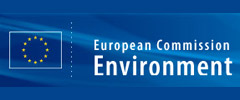The cost of climate change on human health
Interview with Dr. Paul Epstein, Harvard Medical School on Climate Change and Hurricanes
03.11.2005 |Sascha Gabizon
EARTHBEAT: The Pulse of the Planet
Hosted by Daphne WyshamTranscript excerpt from 10-04-05 episode, aired on WPFW, 89.3 FM
Interview with Dr. Paul Epstein
Associate Director of the Center for Human Health and the Global Environment
Harvard Medical School
Wysham: Dr. Epstein in terms of human health tell us what you know regarding hurricanes Rita and Katrina - what sort of human health impacts have you been learning about?
Dr. Epstein: This series of hurricanes has revealed ubiquitous vulnerabilities and unearthed a host of environmental and health problems. We don’t know what the impact of all the spills are but we do know that at least 8 million gallons of oil has been spilled in the precious wetlands, and to put that in perspective, the Exxon Valdez spill released 11 million gallons and we’re still counting. We know that flooding will lead to mold. Floods foster fungi and this is an extremely important health hazard and one of the reasons the insurance industry has pulled out of covering for mold. On other biological levels the oyster beds in the gulf have been devastated. They supply 50% of the nation’s oysters and we will see the impact of this for years to come, and is now a setback on fisheries. The Formosan termite that got a foothold in the 1990s, remember the long El Nino period with no winter frost, led to the flourishing of these termites, you’ll see in the Times and Science Times how the discussion of the debris and the dirt is going to be distributed throughout the South and that these termites will then proliferate. So one needs to think of the immediate effects, but then there are the cascading effects through the ecological systems which can affect our health and the economy for years to come.
Wysham: Now, Dr. Epstein you’ve mentioned mold, fungi, termites - lets put this in a human context with regard to oil spills. What sort of human health effects would you expect to see in the near future both in the Gulf region and in the wake of Rita?
Dr. Epstein: Well as we’ve seen over a1000 people have died from drowning, that’s an immediate issue and 1.36 million people who have been displaced. Regarding the health issues, mold is a cause of respiratory disease it causes severe pulmonary disease in children, we don’t know the exact mold that causes it, but a family of household mold is responsible. We’ll see the water contamination for months and perhaps years to come, its full of toxin. Toxins, the heavy metals, the microorganisms are all an issue and as we see this oil spread throughout the wetlands - wetlands remember are nature’s kidneys, they help to filter these organisms and nutrients and toxins and now as the oil clogs up the natural filters that’s going to retard the recovery of the entire area.
Wysham: What can you predict about possible epidemics? Is there any possibility we may see something likened to the plague?
Dr. Epstein: Well, in the wake of floods, and we see this around the world, we do see clusters of mosquito born diseases, water borne diseases, and even rodent born diseases. Floods drive rodents from their boroughs and they leave floodplains, which are excellent for breeding mosquitoes and of course spread water born disease by contaminating clean water supplies. Ecoli has already been a problem, we can look for mosquito-borne diseases as the heat persists, we can look for West Nile virus. Then water born diseases, Lepto Spirosis, not a name that’s familiar, but prevalent in 17% of the rodents in Baltimore, this is an issue throughout, recall hurricane Mitch in 1998, for example was a huge case of this and water born cholera and mosquito born malaria and Dengue fever. Clearly Public Health needs to be monitoring for this but on the other hand with all the deaths in nursing homes and so on we have seen that this type of intense event can overwhelm the capacity of health, ecological and perhaps economic systems to adapt to and recover easily from this kind of assault.
Wysham: Now in terms of monitoring for out breaks what role has the Center for Disease Control played in monitoring disease outbreaks?
Dr. Epstein: Well, I think the CDC is trying to put in place some monitoring for human health problems, but given the devastation in the area it’s very difficult. On the other hand, monitoring for the kinds of environmental devastation we’re seeing and the threats to the wetlands is something agencies are really not gearing up towards and ultimately this is about our nutrition, our housing and it’s about wetlands that protect us and so on, so if we look at health in a broader sense, not our human health but the health of the ecological systems, the life support systems that we depend on, we’re doing a very poor job of monitoring and we’re doing an extremely poor job of trying to prevent and prepare for such disasters.
Hugh Kaufman, EPA Office of Hazardous and Solid Waste: Doctor, anecdotally we’re hearing that about 80% of the responders down there have diarrhea, rashes, and folks with respiratory problems already, could this be related to the high levels of fungi and pathogens and hazardous vapors that are all over the area? There’s no potable water, the sewer systems don’t work and there’s virtually no electricity and the hospitals and medical practices are offline.
Dr. Epstein: I think you’ve answered all your own questions. It is prima facie in a sense. We know the water is contaminated, we know there are Norewalk viruses that move from these cruise from this epidemic that infect oyster beds and now called noroviruses cause diarrhea and are clearly a health issues in terms of hydration and dehydration. There are also bacteria like the E Coli and I won’t be surprised if we see more outbreaks of vibrio parahemolyticus, which is something that contaminates oysters. Your question about respiratory disease I do think you’ve answered. The toxic vapors and hazardous waste that are becoming aerosolized as well as the issue of mold are presenting enormous assaults on the respiratory track and can cause prolonged damage to the lungs.
Wysham: Can you just put in very clear terms what we would be looking for in 5 years, in 10 years – what do you imagine will be the outcome of these two hurricanes?
Dr. Epstein: Well, I’ve thought of the fever of climate and global warming and I hope we get a chance to return to this -
Wysham: Let’s just dive right in. We’re hearing that the Arctic has shrunk to its smallest size ever and we have forest fires raging in southern California and we’re hearing there will be more hurricanes on the way – put it in a global context for us, please.
Dr. Epstein: The Intergovernmental Panel on Climate Change (IPCC) in 2001 and this is 2000 scientist reporting from 100 nations to the United Nations five years ago, concluded four things: climate is changing, humans are contributing, biological systems are responding on all continents and weather is becoming more extreme. Now if we try to get at some of the definitions, climate is the pattern of weather and that is clearly changing. It’s based on a 30 year period and we are seeing some dramatic changes in the patterns of weather and while no one event is diagnostic of climate change, it’s this relentless pattern of intense droughts, hundred-year floods and prolonged and intense heat waves that are happening globally that define and describe a changed climate. So very simply put, global warming is changing the climate and by that I mean the warming of the lower atmosphere by burning fossil fuels, is changing the heat in the atmosphere and what is more important and crucial to understanding these storms, is that it is warming the deep oceans.
In 2000 the US Department of Commerce’s National Oceanic and Atmospheric Administration found that the oceans are warming to 2 miles below the surface – that’s halfway down. The oceans are the repository for this last century’s global warming and this year Tim Barnett and his colleagues at Scripps Institution for Oceanography reported that 84% of the global warming is in the deep oceans. So when we see these studies by Kerry Manuel at MIT which show that storm destructiveness has doubled since the 1970s, that’s a function of peak winds and duration, and Webster and his colleagues from Georgia and Colorado’s Center for Atmospheric Research see that the category 4 and 5 storms have just about doubled in this period, we get a clear idea, and I should say that all these authors have found that the change in storms is related to the changes we’re seeing in the surface oceans and as surface oceans fuel these kinds of storms it’s the warm water down beneath that replenishes what has evaporated and can generate further storms. So the underlying issue is the warming of the oceans and its heat is now being expressed in evaporation, heavier downpours and with the evaporation and warning, droughts in other areas.
Wysham: Dr. Epstein what do you think about these predictions that we might be seeing more hurricanes this month?
Dr. Epstein: Well, we’re in a cycle of more hurricanes which has to do with conditions in the Pacific Ocean and El Nino and so on and higher atmosphere, but we’re seeing climate change superimposed upon the natural cycles. We’re seeing an exaggeration of natural cycles and evidence that the El Nino southern oscillation cycle has changed, that the North Atlantic oscillation has changed, and this is a big one. What is happening in the Atlantic Ocean is that the tropical seas are warming and becoming saltier because they are evaporating faster and in the Northern Ocean there’s been so much warming near Greenland and the North Pole, that you mentioned, the Polarized shrinking, as well as rain falling at high latitudes, that there is a freshening – it’s less salty in the North, and this sets up a contrast in pressures and temperatures that help to drive wind storms across Europe, that drive Nor’easters Northeast of the United States that may have to do with the catapulting of more hurricanes that form off of Africa and sweep across the Atlantic that carry dust storms that are forming over the expanding dessert over Africa and carry them across with microorganisms and with dust that has become a huge problem of asthma in the Caribbean and in southern states. There’s a number of phenomena that are occurring. James Carrell of the National Center for Atmospheric Research has been prominent in describing these changes in the winds that have been affected by changes in the North Atlantic. This system has been changing for decades and the changes in the Pacific Ocean, Atlantic Ocean and Indian Ocean are being changed in a pattern that is unmistakably attributable to humans and their activities.
Wysham: Just to get back to the more straightforward question of hurricanes this month, do you see studies that confirm the high likelihood of hurricanes this month?
Dr. Epstein: Yes, hurricane Stan and other names, but hopefully we will not get to the alpha, beta and gammas. Clearly we are still in the hurricane season - there is work by Ruth Curry and her colleagues at the Oceanographic Institution that help us understand these warmer, saltier tropical seas in generating series of hurricanes – she has suggested in meetings that the season for hurricanes could even be prolonged - these are early thoughts about how the shrinking of winter time and how the extension of summer, fall and spring could effect the hurricane season. As for other years there is this ebb and flow of the oscillation, although we cannot predict the number we can now predict there will be stronger hurricanes and more intense hurricanes and perhaps even more during the seasons.
Wysham: We are discussing climate change and the implications for ocean systems, the atmosphere and human health. Let’s return to this. Dr. Epstein, when we talk about climate change in this country there is a certain reluctance among some officials to say it is underway, and that it has begun. Has climate change begun, has it accelerated, what can we say decisively?
Dr. Epstein: We have had 19 typhoons in China this year. Last fall there were 4 hurricanes that hit Florida, and that was unprecedented, there were 20 in the Pacific and 10 of them hit Japan, so that the economic dimensions of those with diversified portfolios, be it investments or insurance, is starting to hit home and it is very clear to the Swiss Reinsurance industry, the Munich Reinsurance, the insurers of the insurers – the brain of the economy, as it were – that is incorporating and integrating the costs and we’re seeing costs of extreme events that were $4 billion in the 80s, $40 billion in the 90s per year and $143 billion last year and will surpass that this year and the ratio of those insured has gone from 10% to 30%, it has tripled because these storms are hitting Japan, Europe and the Untied States. No one is immune to climate change. We are way beyond the scientific questions that are still raised by contrarians. It is wrong for the press to give them equal time. I say wrong because we must look at those who have published on this issue and balance those against others who have published on this issue. Of 983 papers on climate change looked at over the last several years, NONE contradicted the basic understanding that carbon absorbs heat going out of the earth and is changing the climate and we are emitting carbon into the atmosphere - these are basic first principles and there are zero papers contradicting this conclusion. The Financial Times, the Wall Street Journal of Europe, states that we are way beyond the question of whether this is happening, the question now is how fast it’s happening and with what magnitude and we’ve all had a wake up call recently with Katrina and Rita that this is happening faster than we thought and an energized system can bring major surprises.
Wysham: Tell us what you know about permafrost thawing, an issue related to the Arctic melting. Would you mind going into some detail around why permafrost melting has the effect that it does in terms of a feedback loop on global climate?
Dr. Epstein: Excellent question. Scientists are now looking at various areas of possible tipping points where climate could accelerate – one of them is the permafrost and we’re seeing melting of large swaths of permafrost across the Arctic, just recently The New Scientist reported, Fred Pearce reported the huge peat bogs in Siberia that have begun to thaw for the first time in 10,000 years and this is happening in Alaska where pipelines are buckling and communities are getting washed away and people are having trouble walking on the ice. But the methane is a powerful greenhouse gas, stored beneath the permafrost, it is a natural gas and is released into the atmosphere as the permafrost thaws and is 21 times more potent than CO2 as a greenhouse gas. It doesn’t last as long as CO2, it can convert with oxygen to CO2, we don’t understand the entire dynamic of it, but we do know that bursts of methane as well as carbon dioxide have been well correlated with rise in temperature. It is not a mystery how it will function; we know it will give a big boost to global warming.
Wysham: Perhaps you could go into a little bit more detail regarding other ways in which this tipping point could be reached shortly as a result of these feedback loops.
Dr. Epstein: Its important to understand that the system itself, the climate system, is more apt to brief surprises, and this is the conclusion of the National Academy of Science’s report “Abrupt Climate Change” several years ago, which was the script for the Pentagon scenario and set the stage for the movie the Day After Tomorrow, the rate of change is changing, the variance means that the systems are unstable, the anomalies that are appearing are emerging from an unstable system. We know that the system is multiply stressed, we are effecting the atmosphere, the stratosphere, the bathysphere, the biosphere, and the cryosphere – all these parts that are components that help the buffering of feedback systems that hold systems together are all being stressed so that our chances of these kinds of surprises are increasing and it’s changing more than we thought it would five years ago.
Ice is a big one. We’re seeing in Greenland summer melt increasing and pools of ice are forming, filtering down through the crevasses and melting at the bedrock, lubricating the base and we’re seeing rivers of ice increase as they flow towards the ocean.
This is a problem because if all of Greenland melted, for instance, it would raise sea levels about 21 feet, no one is projecting this, but there could be carving of ice bergs and sea level could rise much faster than the linear projects we know from thermal expansion, it could rise several inches to feet if big chunks break off. We’re seeing the same instability in Antarctica in the peninsula which is warming very rapidly as well as the west Antarctic ice sheet. In the peninsula we all know that the ice shelves have come apart in the years, but the ice shelves are like ice cubes in the water if they melt they don’t raise sea level but if they melt they present back pressure against the ice sheets that are on land and just as if sand goes on cape cod the dunes can come down faster, the ice shelves melt as they have it takes the pressure off these ice sheets and they’re speeding up and they’re speeding up in west Antarctic ice shelves. So we may see some nonlinear surprises in what happens with sea level and the sea level and storm surges is nonlinear by that I mean if sea level goes up several inches, what was a hundred years storm becomes a fifty what was a fifty becomes a ten and so on, so that we’re seeing synergies among the sea level and the intensity of storms that are quite threatening, this is quite scary what I’m predicting, projecting not predicting, but the point is that the climate is unstable. The good news is that an unstable system can be re-stabilized but it’s going to take a dramatic investment in our common future to bring down greenhouse gases 60-70 percent to stabilize the concentrations and give this climate system a chance to re-stabilize.
Wysham: Why should the average person make this issue a priority, how is it going to affect them in their lifetime?
Dr. Epstein: Well, let me say we are just finishing a report on a 3 year study called, “Climate Change Futures: Health, Ecological and Economic Dimensions” sponsored by the Swiss Reinsurance company and the United Nations Development Program, and it is about the health, ecological and economic dimensions on humanity because we are seeing immediate effects for our health in terms of rising rates of asthma, carbon dioxide itself stimulates plant growth, we know that but it stimulates plant and fungi to make more pollen and spores so we’re seeing huge counts of pollen and part of this may be just carbon dioxide, forget global warming for a moment, at the same time warming may be bringing earlier springs so we’re seeing a change in other areas – we’re seeing Lyme bearing ticks move north and in Europe and the US this is an issue as a disease we can treat, but it represents a change in the range of infectious diseases. At the same time we are seeing a host of insects that effect trees. We’re seeing in the northeast an aphid like bug move north from Connecticut through Massachusetts, it has now reached New Hampshire and it kills Hemlock trees, these are pine trees, and they line streams, nourish trout, they are arbors for wintering moose - this stands to effect the entire ecology of the region. Now acid rain may weaken the trees, and there are compounding issues that decrease the host defenses and boost the pests and so there are things weakening the trees and at the same time, each warm winter allows the movement of the wooly adelgid, and we’ve documented that in Massachusetts. On the west coast from Alaska all the way down to Arizona, spruce bark beetles are infesting the vast stands of spruce trees – and here again it is the host and the agent. The trees are weakened by drought because there is a resin in the spruce trees that drowns the beetles as they attempt to bore through the bark and with the prolonged six year drought we are still in we see weakened trees at the same time the warming emboldens the pests, they are climbing up to higher altitudes and are even sneaking in an extra generation each year. And so they are killing vast stands of trees all the way up to Alaska and all the way down to Arizona, New Mexico this then sets the state for wildfires…
Wysham: Right and then you have another feedback loop in which you are releasing CO2 into the atmosphere as a result of the forests dying off.
Download the full interview as a Word file.


































